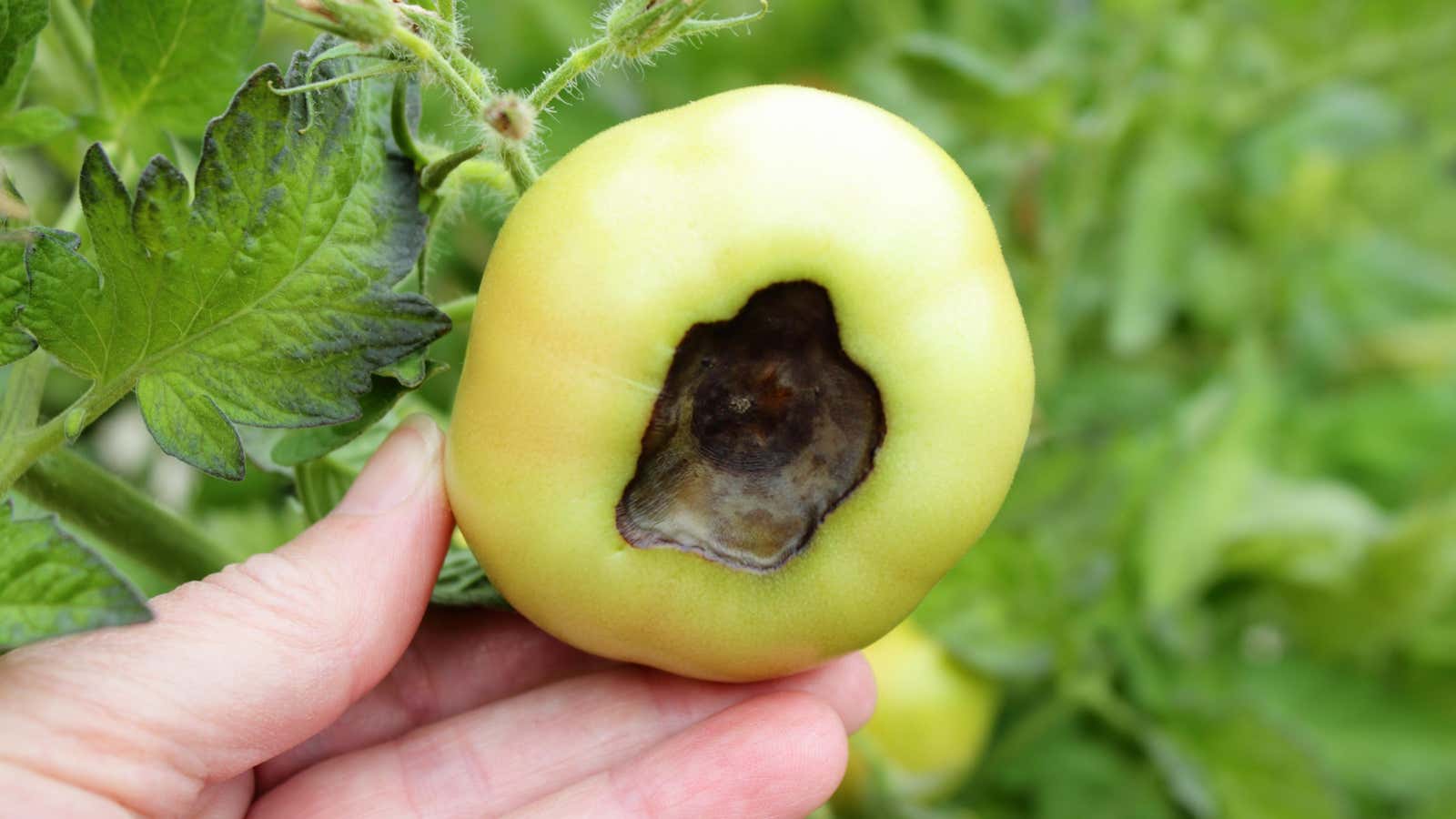How to Stop Blossom Rot on Tomatoes and Pumpkins

In many places in North America, this is the time of year when zucchini and tomatoes begin to bloom and bear fruit. Gardeners are interested in seeing the results of their labor, but sometimes the flowers begin to wither, and the tip of the pumpkin or tomato turns brown, as if they are only partially formed. This can ruin an entire crop of beautiful homemade squash or tomatoes, but luckily there are solutions, and they’re probably easier than you think.
What is blossom end rot?
End rot is a condition in which tomatoes and squash rot on the plant before it is fully formed. This disease is caused by calcium deficiency and can be eliminated by changing the PH in the soil, using calcium-rich fertilizers, or spraying calcium-rich foliage . Regular watering is also important, especially when it comes to heirloom tomato varieties, as they tend to be more prone to blossom end rot.
You can use one of these methods to heal a struggling garden plant and get it back on the path to success. And if you notice the disease early enough, you can still get a well-produced plant with just a few more steps.
Water your garden evenly
One of the most common causes of blossom end rot can be irregular watering. If the roots do not receive a constant source of water, this can lead to absorption problems and calcium deficiency. If this is your culprit, you might want to consider a soak hose or drip irrigation system, which will provide your plant with an even amount of moisture and allow the soil to stay moist near your plants’ roots. In general, when it is very hot outside, watering in the evening is a good idea. In cooler weather, you should water first thing in the morning because watering in the evening can encourage mold and slugs.
Correct soil pH
If you have pH issues that are preventing pumpkins from absorbing calcium through their roots, you’ll first need to check the soil’s pH. You can use a soil pH tester , which is available at most gardening stores. For pumpkins, soil pH should be between 6 and 6.5. For tomatoes, it should be between 5 and 7.5. If the PH is too low, you can add lime to raise it. Be careful to follow the instructions on the package to avoid over-correcting and too high a PH value.
Add gypsum to the soil
Another method that may be useful is to add plaster to the garden. This will add calcium to the soil and also help the roots of the affected plant absorb it. If your PH is ok, this may be your problem. When using granulated gypsum, the nutrients will soak into the soil where they can be absorbed by the roots.
Use a foliar spray on your plants
To make sure your plants are getting what they need, you can first remove the affected fruit and then use a calcium-rich foliar spray to apply the calcium directly to the plant. In this way, you can help your plant not waste its energy growing rotten fruit and allow it to spend more energy producing healthier flowers. A calcium-rich foliar spray will allow the plant to absorb calcium quickly, resulting in better, healthier fruit.